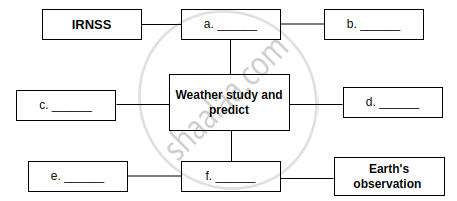Advertisements
Advertisements
प्रश्न
Write a note on orbital velocity
उत्तर
Nowadays many artificial satellites are launched into the Earth’s orbit. The first artificial satellite Sputnik was launched in 1956. India launched its first satellite Aryabhatta on April 19, 1975. Artificial satellites are made to revolve in an orbit at a height of few hundred kilometres. At this altitude, the friction due to air is negligible. The satellite is carried by a rocket to the desired height and released horizontally with a high velocity, so that it remains moving in a nearly circular orbit. The horizontal velocity that has to be imparted to a satellite at the determined height so that it makes a circular orbit around the planet is called orbital velocity.
The orbital velocity of the satellite depends on its altitude above Earth. Nearer the object to the Earth, the faster is the required orbital velocity. At an altitude of 200 kilometres, the required orbital velocity is little more than 27,400 kph. That orbital speed and distance permit the satellite to make one revolution in 24 hours. Since Earth also rotates once in 24 hours, a satellite stays in a fixed position relative to a point on Earth’s surface. Because the satellite stays over the same spot all the time, this kind of orbit is called ‘geostationary’.
Orbital velocity can be calculated using the following formula.
v = `sqrt ("GM"/("R"+"H")`
where; G = Gravitational constant (6.673 × 10– 11Nm2kg– 2)
M = Mass of the Earth (5.972 × 1024kg)
R = Radius of the Earth (6371 km)
h = Height of the satellite from the surface of the Earth.
APPEARS IN
संबंधित प्रश्न
Solve the problem.
How much time a satellite in an orbit at height 35780 km above earth's surface would take, if the mass of the earth would have been four times its original mass?
The function of a satellite launcher is based on Newton's second law of motion.
Distinguish between:
High Earth orbit - Medium Earth orbit.
Note the relationship between the entries in all the three columns in the table and rewrite the table.
| Column-1 (Location) |
Column-2 Height from the earth’s surface (km) |
Column-3 g (m/s2) |
| Earth’s surface (average) | 8.8 | 0.225 |
| Mount Everest | 36.6 | 9.81 |
| Maximum height ever reached by manmade balloon | 400 | 9.8 |
| Orbit of a typical weather satellite | 35700 | 9.77 |
| Orbit of communication satellite | 0 | 8.7 |
How is a satellite maintained in nearly circular orbit?
What is microgravity?
Write down the formula of orbital velocity.
Give scientific reasons.
The geostationary satellite is not useful in the study of polar regions.
Complete the following equations:

The orbit of a satellite is exactly 35780 km above the earth's surface and its tangential velocity is 3.08 km/s.
How much time the satellite will take to complete one revolution around the earth?
(Radius of earth = 6400 km.)
